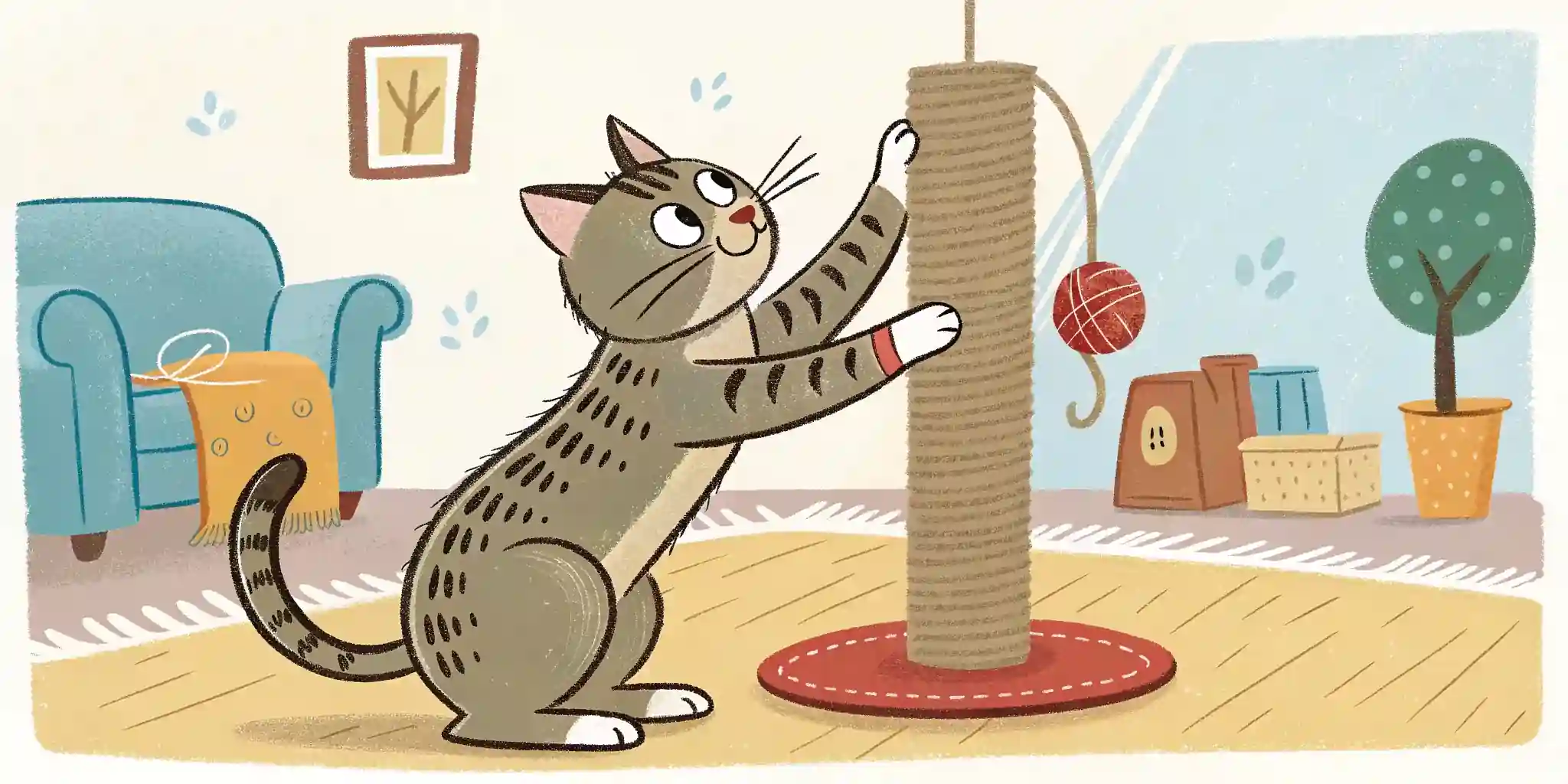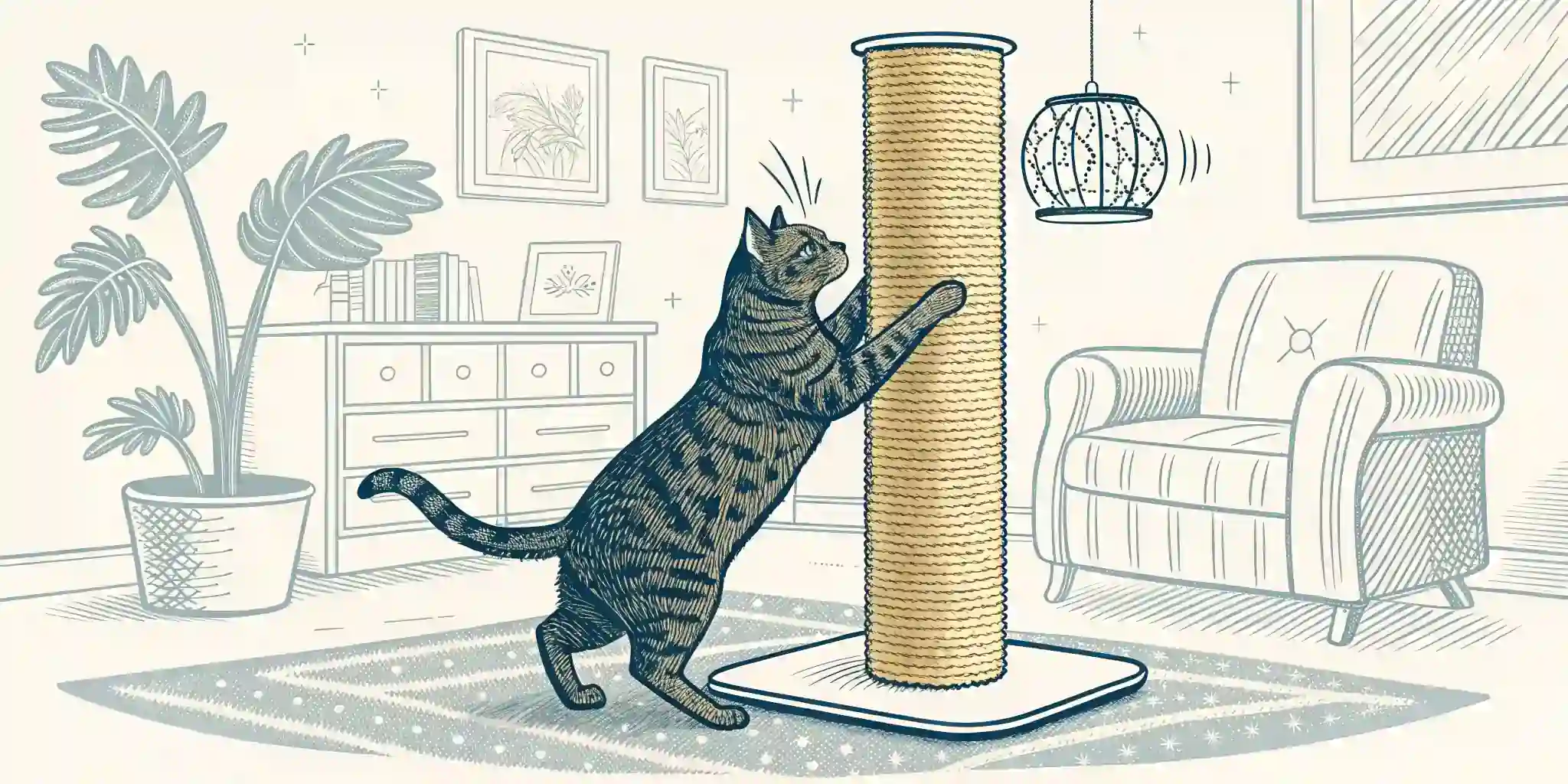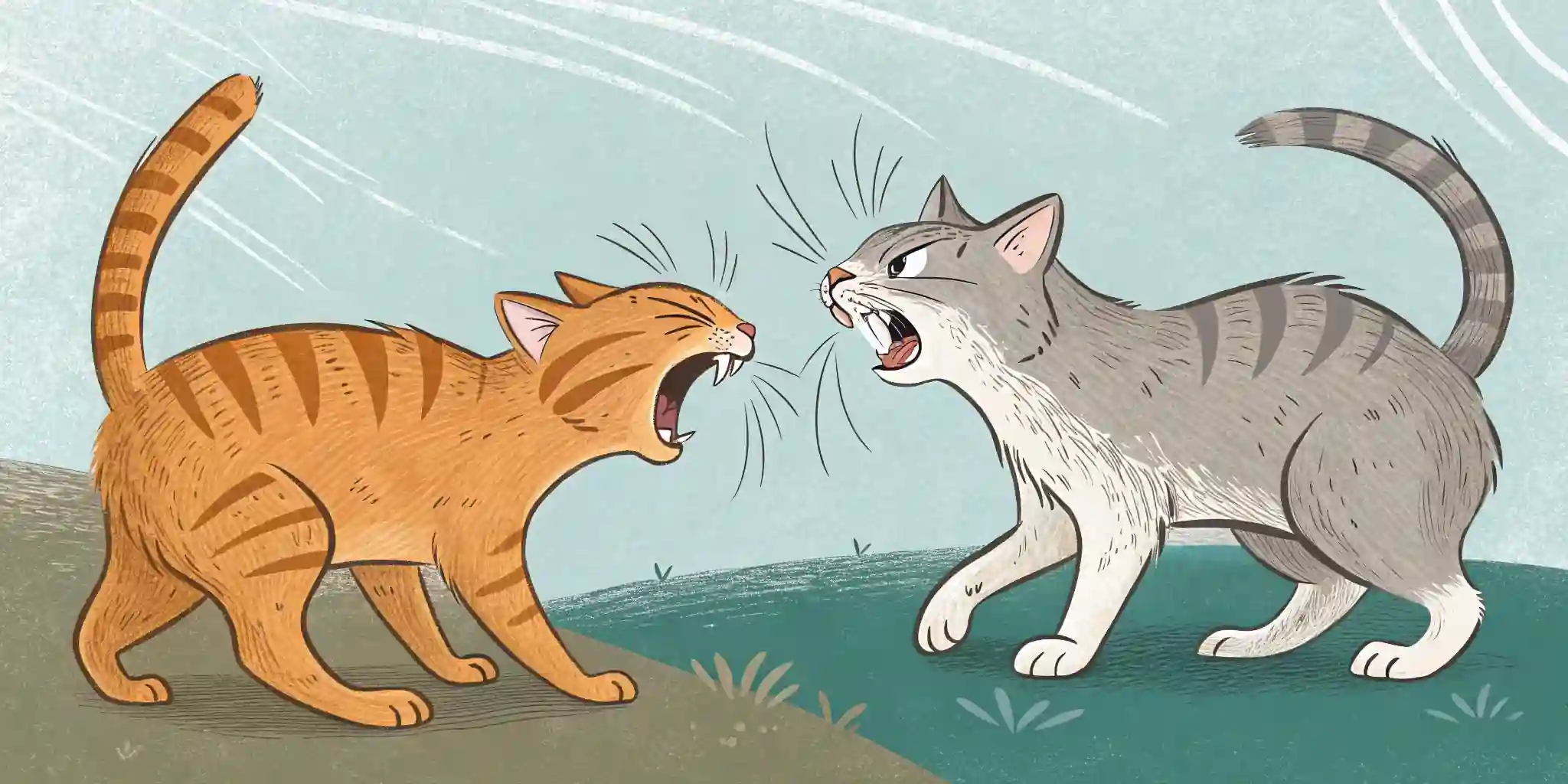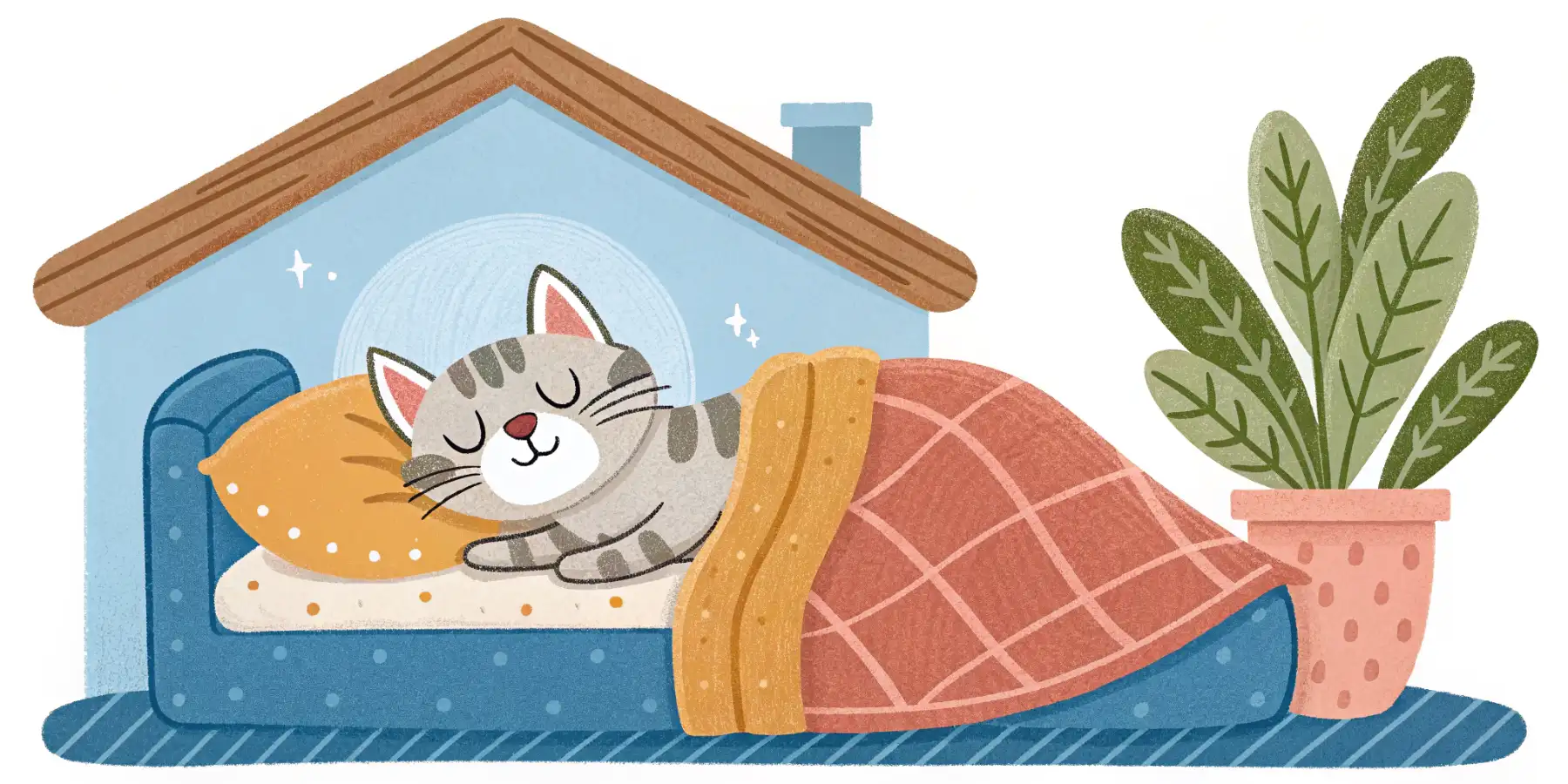
Stop Cat Scratching, Spraying & Aggression!
Cat scratching & spraying got you stressed? 😫 Learn to manage these common behaviors and aggression for a happier home! Click here!
Managing Common Behavioral Issues in Cats: Scratching, Spraying, and Aggression
Cats. We love them for their independence, their purrs, and their general air of mystery. But sometimes, that mystery translates into behaviors that leave us scratching our heads (pun intended!). Scratching furniture, spraying, and aggression are common cat behavioral problems that can test even the most patient pet owner. But before you resign yourself to a life of shredded sofas and hissing matches, understand that these behaviors usually have underlying causes and can be managed with the right approach.
Understanding the “Why” Behind the Behavior
It’s crucial to remember that cats don’t engage in these behaviors out of spite. They’re communicating something, whether it’s stress, territoriality, or unmet needs. Before you can address the what, you need to understand the why. For example, excessive scratching on furniture might not just be about sharpening claws; it could be a way for your cat to mark their territory, relieve stress, or even stretch their muscles.

Image: A tabby cat happily using a scratching post. Providing appropriate scratching outlets is crucial for managing destructive scratching behaviors.
Scratching: More Than Just Sharpening Claws
Scratching is a natural and necessary behavior for cats. It helps them:
- Maintain their claws: Removing the outer, dead layer of the claw.
- Mark their territory: Scratching leaves both a visual mark and a scent (from glands in their paws).
- Stretch their muscles: It’s a full-body exercise!
However, when that scratching is directed at your favorite armchair, it becomes a problem. So, how do you redirect this natural urge?
- Provide appropriate scratching posts: Offer a variety of materials (sisal, cardboard, carpet) and orientations (vertical, horizontal). In my experience, most cats prefer a sturdy, tall scratching post they can really stretch on.
- Placement is key: Put the scratching post near where your cat already scratches or in high-traffic areas.
- Make the post appealing: Use catnip or play near the post to encourage use. You can even use a laser pointer to encourage them to chase the light up the post.
- Protect your furniture: Cover the areas your cat scratches with double-sided tape, plastic sheeting, or furniture protectors. I know it’s not the most stylish look, but it’s temporary!
- Trim those claws! Regular nail trims can minimize damage, even if your cat continues to scratch.
If your cat continues to scratch furniture even with readily available scratching posts, consult your veterinarian. Underlying anxiety or medical conditions could be contributing to the behavior. Are you looking for help with excessive scratching in cats? Start with the basics, and don’t be afraid to seek professional advice.
Spraying: A Territorial Declaration
Spraying is another common feline behavior that can be frustrating for owners. It involves a cat backing up to a vertical surface and spraying a small amount of urine. Unlike urination, which is primarily for eliminating waste, spraying is primarily for marking territory.
- Distinguish between spraying and urination: Spraying is usually a small amount of urine and directed at vertical surfaces. Urination is a larger amount and typically in a horizontal location (litter box or accident).
- Identify the cause: Stress, anxiety, new pets, changes in the environment, or even the presence of outdoor cats can trigger spraying.
- Rule out medical issues: Bladder infections or other urinary problems can sometimes mimic spraying. A vet visit is crucial!
Once you’ve ruled out medical issues, consider these strategies:
- Reduce stress: Create a calm and predictable environment. Use pheromone diffusers like Feliway, which mimic natural feline pheromones and can help reduce anxiety.
- Clean thoroughly: Enzymatic cleaners are essential for removing the scent of urine, which can trigger repeat spraying in the same areas. Regular household cleaners won’t cut it.
- Address territorial issues: If outdoor cats are triggering the spraying, try blocking their view with window coverings or using motion-activated sprinklers to deter them.
- Increase resources: Make sure you have enough litter boxes (the rule of thumb is one per cat, plus one extra), food bowls, water bowls, and scratching posts.
- Consider medication: In some cases, anti-anxiety medication prescribed by your veterinarian may be necessary.

Image: A cat exhibiting spraying behavior on a wall. Addressing the underlying cause of spraying is vital for effective management.
Spraying can be a sign of a deeper emotional issue, so don’t hesitate to consult with a veterinary behaviorist. I believe that understanding the root cause is the key to stopping urine spraying in cats.
Aggression: When Feline Friendliness Turns Sour
Aggression in cats can be directed towards other cats, people, or even objects. It’s essential to understand the type of aggression to address it effectively. Common types include:
- Territorial aggression: Protecting their space from intruders (other cats, strangers).
- Fear aggression: Reacting aggressively out of fear or perceived threat.
- Play aggression: Mistaking hands or feet for toys.
- Redirected aggression: Directing aggression towards a nearby target after being triggered by something else (e.g., seeing an outdoor cat).
How to stop cat aggression is a common question, but the answer depends on the specific type.
- Identify the trigger: What situations or stimuli trigger the aggression? Keeping a journal can be helpful.
- Create a safe space: Provide your cat with a safe retreat where they can escape from triggers.
- Gradual reintroduction: If the aggression is towards another cat, reintroduce them slowly and gradually, starting with scent swapping and visual contact through a barrier.
- Positive reinforcement: Reward calm behavior with treats and praise.
- Never punish: Punishment can increase fear and anxiety, making the aggression worse.
- Seek professional help: A veterinary behaviorist can help diagnose the underlying cause of the aggression and develop a customized treatment plan.
Redirected aggression can be particularly tricky. For example, imagine your cat is sitting on the windowsill, sees an unfamiliar cat in the yard, and becomes highly agitated. You reach down to pet them, and they lash out at you. This isn’t because they’re angry at you, but because they’re redirecting their frustration. In these situations, it’s crucial to avoid approaching your cat until they’ve calmed down.

Image: Two cats exhibiting aggressive behavior towards each other. Identifying the cause of aggression and implementing a gradual reintroduction plan can improve cat-to-cat relationships.
Seeking Professional Guidance
While these tips can be helpful, sometimes professional help is necessary. A veterinarian can rule out underlying medical conditions, and a veterinary behaviorist can help diagnose the cause of the behavioral issue and develop a customized treatment plan. Don’t hesitate to reach out for help! Living with a cat should be a joyful experience, and addressing these common behavioral issues can help ensure a harmonious relationship between you and your feline friend.
Remember, patience and understanding are key. By understanding the why behind your cat’s behavior and implementing appropriate management strategies, you can help them live a happier, healthier, and less destructive life. It is my firm belief that with the right approach, you can overcome challenges with cat behavior and create a more peaceful home for everyone.

Image: A relaxed cat being petted by its owner. Building a strong bond with your cat through positive interactions and a supportive environment can minimize behavioral issues.


